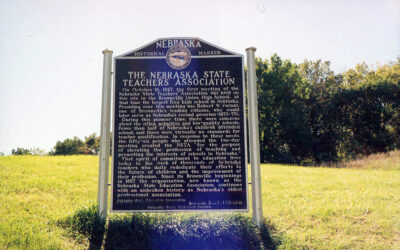The extermination of the buffalo on the Plains occurred largely between 1870 and 1885. The Nebraska State Journal of Lincoln on February 1, 1874, editorialized in vain in favor of “a law for the protection of the buffalo”:
“When the law protects from sudden extinction, antelope, deer, prairie chickens, quails and other kinds of game, by prohibiting hunters from killing them during the breeding season, there is no law for the protection of the buffalos. The consequence is that these animals are being slaughtered at such a wholesale rate as will insure their total extinction within a very few years.
“The extent to which the slaughter of these animals is carried on is almost incredible. In the western portion of this State, their carcasses are so thickly strewn that a gentleman informs us he could stand at any point and count five hundred carcasses. Another tells a story, harder to believe, that in one locality, he could walk on the remains of the animals for nearly half a mile, without touching his feet on the ground.
“These stories are probably somewhat exaggerated, but that a terrible warfare is being waged against these poor brutes, is certain from the fact that one firm at a point on the U.P. Railway, has been shipping their hides at the rate of 500 a day. Trains almost loaded with this merchandise have been sent east, and yet the supply follows closely upon the demand.
“There are hunters who follow the business of killing these animals merely for their hides, sometimes not removing any portion of the meat, but leaving it to rot on the plains. Others remove the tongues only, and some take away the hams. We understand that hunters have lately been employed in killing these animals for half a cent a pound. These statements show that something must be done to save the bison from extermination.
“A law should be passed to protect the bison, and we hope that it will be done at an early day. It would be a burning shame if the buffalo should be wiped from the face of the earth. Let us have a law for the protection of the buffalo.”



